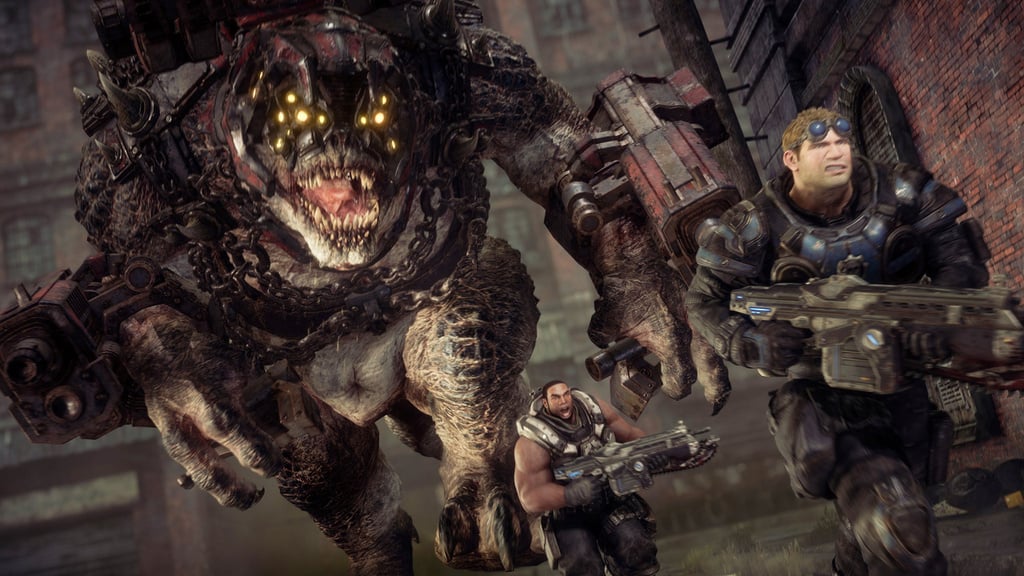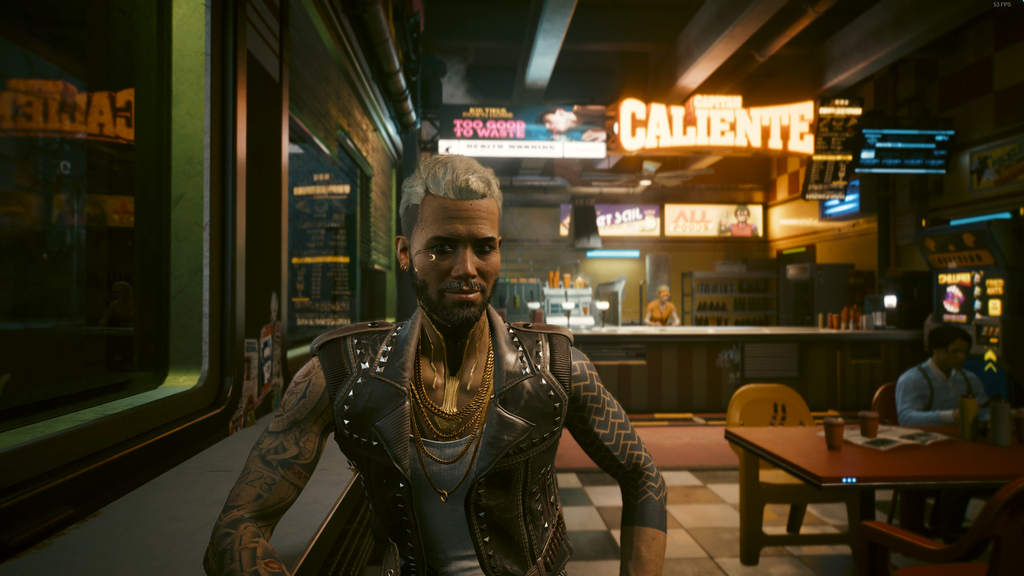AI Isn't Magic, It's Maths
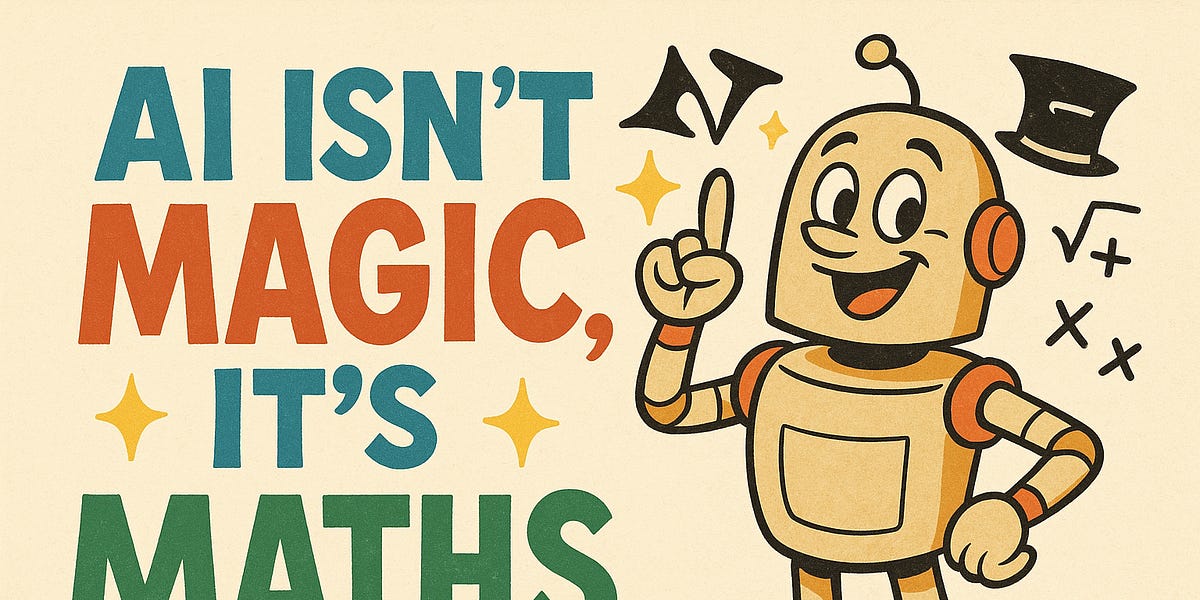

So much Hype….
Everyone’s talking about artificial intelligence these days. ChatGPT can whip up an essay or answer your questions like it reads your mind. Midjourney conjures up stunning art from a simple prompt. It almost feels magical. But here at Zero Fluff, we don’t do magic – we do reality. And the reality is: AI isn’t magic at all. It’s math. These AI systems are incredibly sophisticated, but they run on cold, hard calculations, not wizardry. In this no-nonsense guide, we’ll demystify AI in plain English. By the end, you’ll understand what AI really is, how it works (without technical fluff), why it sometimes messes up, and why it’s getting better every day.
What Is AI, Really? (No Magic Required)
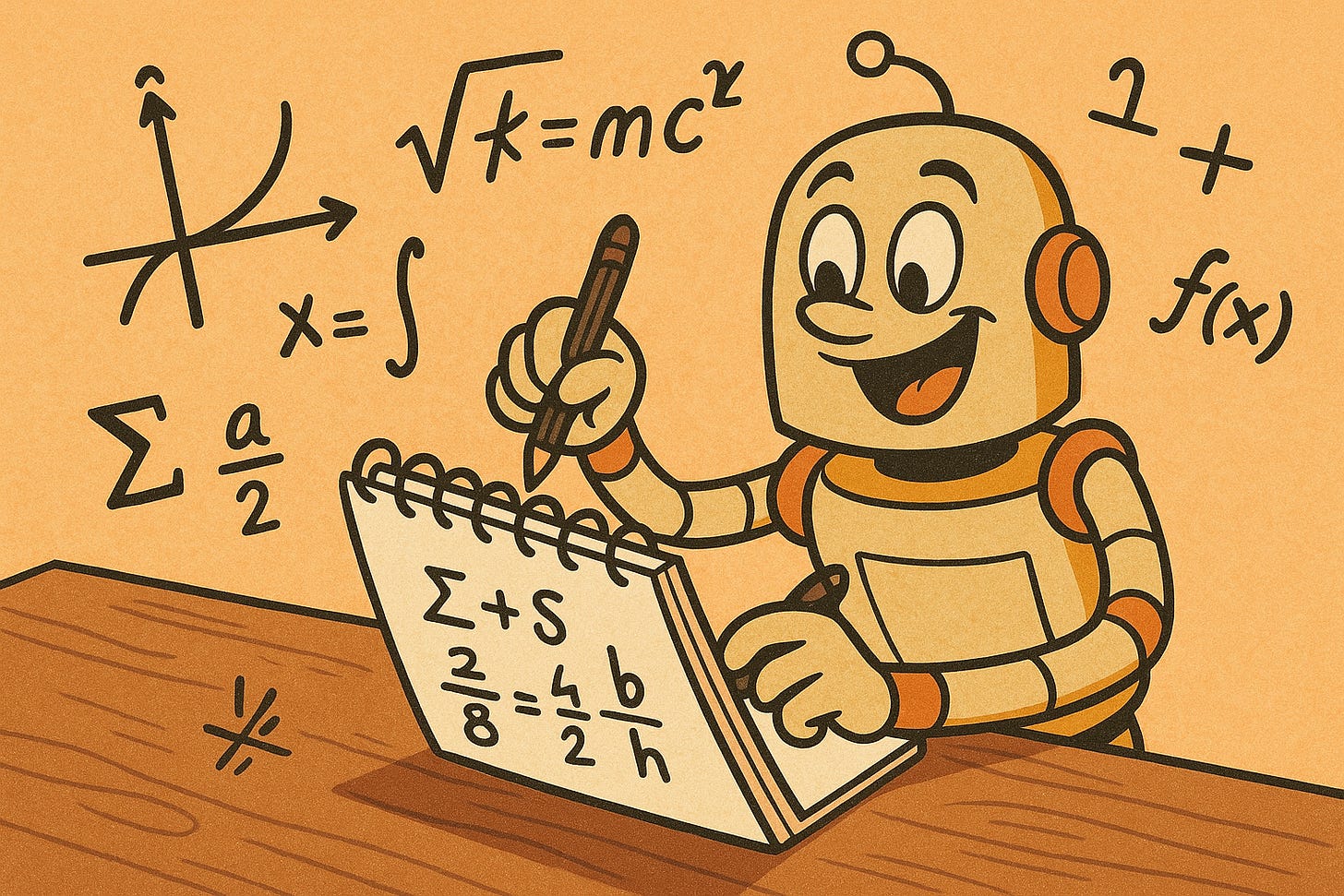
Artificial Intelligence can sound intimidating, but at its core it’s much simpler than sci-fi movies make it seem. AI is basically a computer program that has learned patterns from a lot of data, then uses those patterns to make predictions or decisions. Think of it like a super advanced version of the autocomplete on your phone.
ChatGPT Example: When you start typing a text message and your phone suggests the next word, that’s autocomplete. ChatGPT does the same thing, but on steroids. It has read (technically, trained on) millions of books, articles, and websites, so it has seen how sentences flow and how facts are stated. When you ask it a question, it doesn’t search some magical database for an answer – it predicts what a good answer looks like based on the patterns it has seen in all that text . It’s like having the world’s most educated parrot: it has heard everything, and now it can mimic a convincing answer. As one AI expert bluntly put it, “AI is just the application of mathematics to data at a very large scale” . No magic, just math and massive data-crunching.
Midjourney (AI Art) Example: Ever wondered how an AI can create a painting of “a dragon flying over New York City in Van Gogh’s style”? Again, it’s not sorcery. Image AIs like Midjourney or DALL-E have been trained on millions of images. During training, they learned the statistical patterns that make up a cat photo versus a landscape versus a Van Gogh painting. When you give a prompt, they start with random noise and mathematically refine it step by step, guided by probabilities, until an image emerges that matches the prompt. In simple terms, the AI has a sense of which colors and shapes usually go together to look like “dragon”, “sky”, “city skyline”, etc., and it keeps adjusting an image until those appear. It feels creative, but under the hood it’s just pattern matching on a grand scale.
AI Assistants like Claude: Claude (by Anthropic) and others are like cousins of ChatGPT. You ask them for help – “Summarise this report” or “Give me dinner ideas” – and they generate responses using the same principle: predicting likely answers from huge amounts of training text. They don’t understand the request like a human would; they just know statistically which words tend to follow which. The result can be very useful and surprisingly coherent, but it’s coming from calculation, not comprehension .
In short, AI systems learn from examples (data) and apply math (algorithms) to find patterns. When they respond to you, they are generating something new based on those learned patterns and probabilities. As impressive as the output is, there’s no mystical intelligence at play – just a lot of number crunching and clever programming.
Under the Hood: It’s All Math and Probability
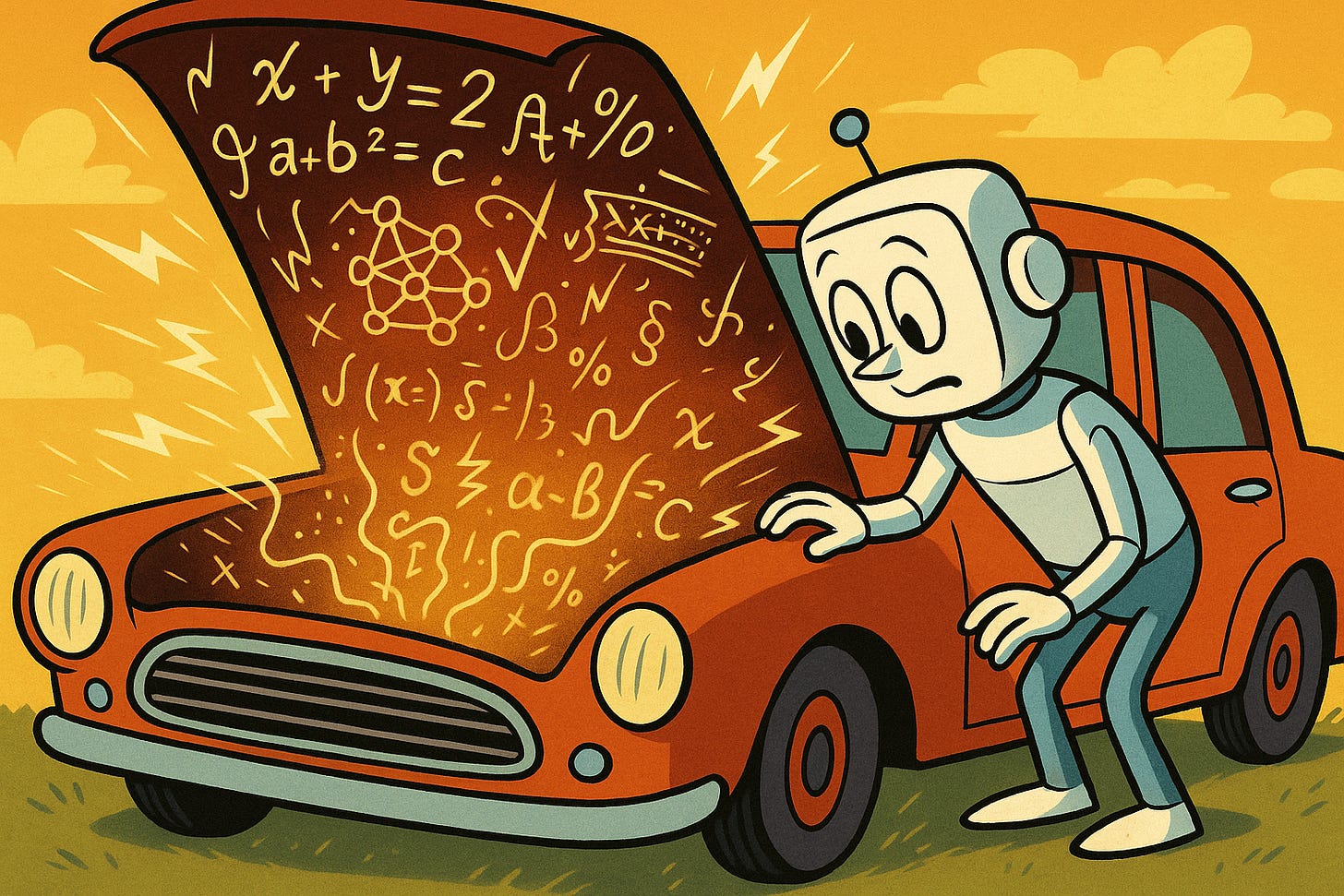
Why do we say AI is math? Because every step of what these models do can be broken down into mathematical operations. When you hear terms like neural networks or machine learning models, they really mean a whole bunch of equations with millions (or billions) of parameters. These parameters are like dials that were tuned during training to make the model good at whatever task – whether that’s language or images or something else.
For example, ChatGPT’s brain is essentially a giant matrix of numbers. To decide the next word, it’s doing millions of multiplications and additions (very, very fast) to figure out which word is most probable to come next in the sentence. It might consider, “Given the prompt so far, there’s a 79% chance the next word is ‘the’, 20% chance it’s ‘a’, 0.5% chance it’s ‘elephant’, etc.” Then it picks one (usually the highest probability). Do that word after word, and you get a full answer. All of those probabilities come from the math it learned during training – scanning those billions of words and seeing what word tends to follow what.
The same principle applies to other AI:
An AI vision model looks at an image and, instead of seeing a “cat” the way a human would, it sees a grid of pixel values (numbers) and runs calculations to decide “there’s an 87% chance this pattern of pixels is a cat”. Again, pure math – no actual concept of a furry animal with whiskers, just patterns of data.
A voice recognition AI turns your spoken words into text by analysing frequencies and waves in the audio (numbers) and matching them to probable phonemes and words.
From the outside, AI outputs can feel mysterious or creative. But at Zero Fluff we’ll remind you: the magic is in the math. There’s a famous saying in AI circles that these models are basically “stochastic parrots” – fancy way of saying they randomly (stochastically) parrot back patterns they’ve seen before. It sounds a bit harsh, but it captures the idea that AI doesn’t truly understand meaning; it just reproduces patterns . When ChatGPT explains something in simple terms or Midjourney paints a masterpiece, it’s because math and statistics make it possible, not because the AI wants to express an idea or has imagination.
To be clear, calling it “math” doesn’t make it any less impressive. The scale and speed of the calculations are mind-blowing. Today’s AI models juggle billions of numbers in real-time to give you a result in seconds. That is amazing – it’s a triumph of human engineering and mathematical innovation spanning decades. But it’s not magic. In fact, much of the AI we use today is built on research from the 1940s-50s onward – neural networks and algorithms that have been refined over generations. We’re just now seeing them shine thanks to modern computing power.
By recognising AI’s mathematical nature, we also set the right expectations. It helps us appreciate what AI can do, and understand its quirks and limits (which we’ll get into next). As Christopher Penn, an AI expert, said recently: “There’s no magic here. AI is math, not magic… just the application of mathematics to data at a very large scale.” When you keep that in mind, you can cut through the hype and see AI for what it really is.
Amazing but Flawed: AI’s Current Limitations

AI can do astonishing things, but it’s far from perfect. If you’ve played with ChatGPT or other AI tools, you might have noticed they sometimes behave in ways no human would. Let’s look at a few of the key limitations of current AI systems – and why they happen:
1. Hallucinations – Making Stuff Up: One notorious quirk of AI like ChatGPT is that it can “hallucinate” – in other words, generate information that is completely false or nonsensical, yet it sounds plausible . For example, you might ask for a historical quote and the AI confidently gives you a quote that sounds real but was never actually said. Or it might cite a research paper that doesn’t exist. This isn’t the AI trying to lie; it’s a side effect of how it works. Remember, the AI is predicting the most likely next words. If your question is tricky and the true answer isn’t in its training data, the model will guess based on whatever seems statistically appropriate. There’s nothing in its programming that says “only respond with facts” – it has no direct connection to truth, only to patterns of text. As IBM explains, the term hallucination is used because the AI is perceiving patterns that aren’t really there, a bit like how humans see shapes in clouds . These hallucinations happen due to the model’s complexity and the gaps or biases in its training data. No magic = no guarantee of truth. The model doesn’t know when it’s wrong. It just keeps talking in a very confident tone because that’s how the pattern often looks in the data. Researchers are trying to fix this (we’ll discuss improvements shortly), but for now, AI can and will fabricate info if you stray outside what it firmly “knows.”
2. No True Understanding or Common Sense: Current AI is superficial in its knowledge. It reads and writes, but it doesn’t truly understand the world or the meaning behind the words . It lacks common sense and real-world experience. For instance, if you ask a tricky riddle or a question that requires reasoning beyond pattern matching, the AI might give a wrong or weird answer. Early versions of GPT famously struggled with basic logic puzzles or math word problems – sometimes insisting that 2+2=5 if the wording of the problem led it astray. Why? Because these models don’t build a coherent model of the world; they don’t have mental “notes” like a human does. They operate one word at a time. They don’t truly know that an elephant is big, or that time flows forward, or that you can’t put an elephant in a fridge – they only know sentences about those things. This lack of genuine understanding is why an AI might contradict itself in a long conversation, or fail at tasks that require real insight rather than pattern recall. We say they’re “intelligent” but they don’t have sentience or deep comprehension. They’re brilliant mimics, not thinkers. This is a fundamental limitation of today’s AI architectures – they excel at form, but don’t grasp meaning. (To be fair, some AI models are now being trained to have a bit of a reasoning process with techniques like “chain-of-thought prompting”, but it’s still math under the hood, not a sudden emergence of common sense.)
3. Bias and Fairness Issues: Because AI learns from data, it absorbs the biases and flaws in that data. This is a huge concern: if the training text contains stereotypes or skewed viewpoints, the AI will pick those up. For example, if it saw in its training data many sentences like “Scientists are he…” and “Nurses are she…”, it might internalise gender biases about certain jobs. Or an image recognition AI trained mostly on lighter-skinned faces might mis-identify people with darker skin. AI doesn’t mean to be biased (it has no intentions at all), but it reflects the world it was shown, warts and all. As one glossary on AI bias put it, “AI bias occurs when algorithms are trained on data that contains existing bias. This leads to the perpetuation of biases or mistruths… AIs are often seen as neutral, but they can amplify human prejudices if those exist in the data.” . In other words, garbage in, garbage out. If some of the “ingredients” in the AI’s training data are rotten, the outputs will be too – no matter how fancy the algorithm. (An expert even compared AI to cooking: if your ingredients are bad, it doesn’t matter how skilled the chef is, the meal will taste bad .) This limitation exists because AI has no moral or contextual judgment of its own. It doesn’t know right from wrong or fair from unfair; it just statistically mirrors what it learned. That’s why tech companies now put a lot of effort into “AI ethics” and filtering the training data or adjusting the model to mitigate these biases. It’s an ongoing challenge.
Those are three big ones, but there are others too. AI models can be brittle – a slight change in phrasing might confuse them. They lack perspective and emotional intelligence – an AI can’t truly understand how you feel. And importantly, they can be misused or produce harmful content if not properly controlled (e.g. generating disinformation or malicious code). Each of these issues arises from the same root fact: today’s AI = pattern recognising math engine, not a wise mind. Knowing this, you can understand why, say, ChatGPT might give a silly answer or why an AI image generator might need filters (to prevent it from, for example, creating harmful or copyrighted images it doesn’t “know” it should avoid).
Why do these limitations exist? In summary, because of the way AI is built:
They predict rather than truly reason.
They’re trained on human data (which is imperfect).
They have no grounding in the physical world or real experience, only what’s in their dataset.
They lack an internal model of truth or consistency – they don’t “know” facts, they just have probabilities.
Understanding this helps temper our expectations. It’s not fair to expect human-level judgment or 100% accuracy from a system that was never designed for that level of understanding. The good news is that researchers are aware of these issues and are constantly improving AI to address them.
The Latest and Greatest (Still Not Magic)
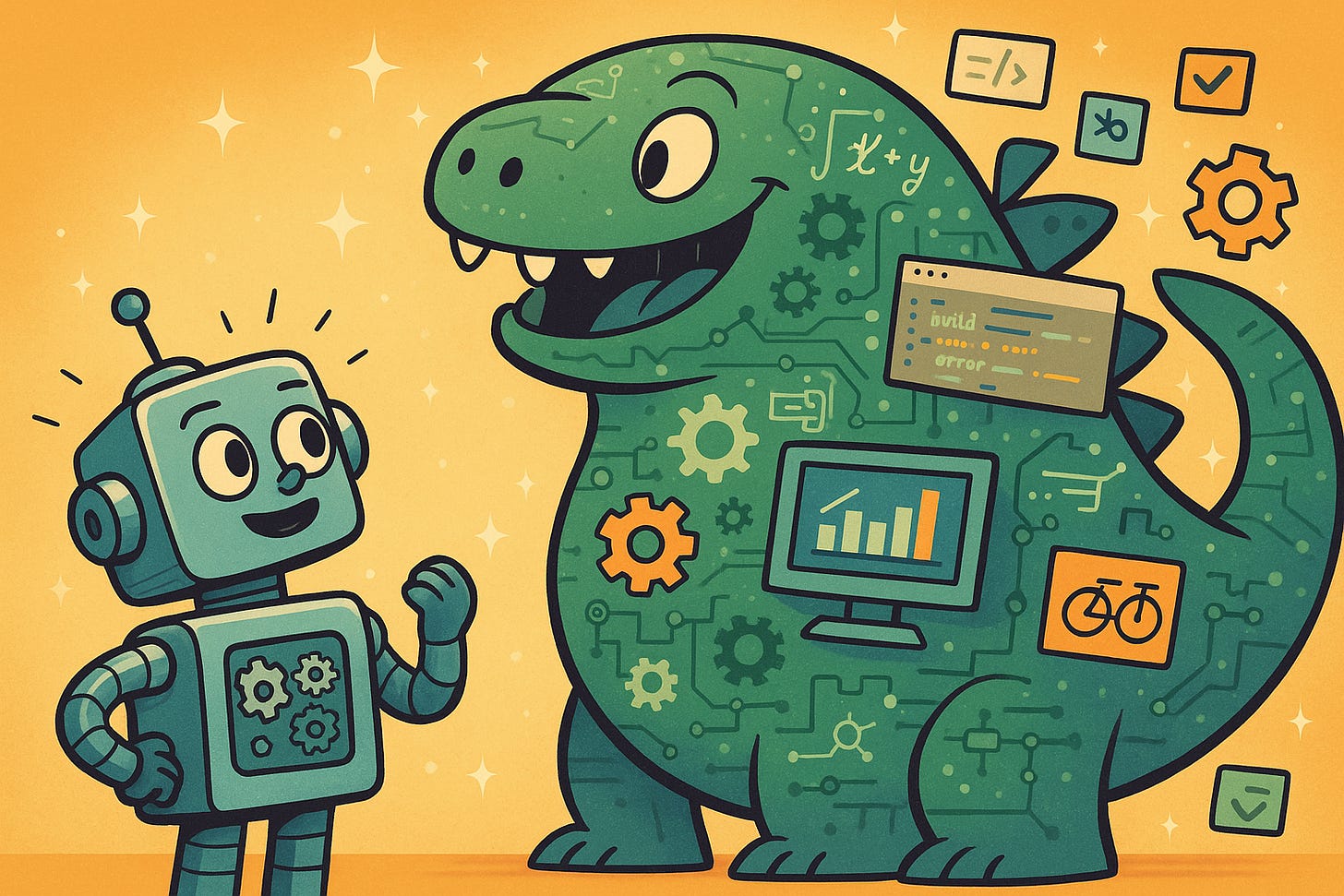
You might be thinking, “Okay, AI has issues, but it’s improving fast, right?” Absolutely. In fact, the pace of improvement in AI over just the past couple of years is staggering. Let’s look at some recent developments – like OpenAI’s GPT-4 (specifically the new GPT-4o model) and Anthropic’s Claude 3 – to see how far things have come. These cutting-edge models are more capable than anything before… yet they still illustrate our core message: even the latest AI is powerful math, not magic.
GPT-4o (OpenAI’s GPT-4 “Omni”): The original GPT-4 was already a leap – more reliable and nuanced than GPT-3.5. But OpenAI didn’t stop there. They introduced GPT-4o (the “o” stands for omni), a next-gen version released in 2024 that can handle multiple types of input. This AI can take in text, images, and even audio all in one model . For example, you could show it a chart or play it a song and ask questions about it. It’s also much faster and can juggle way more information at once – GPT-4o has a huge context window of 128,000 tokens (imagine it reading an entire book and remembering it) . That means it can consider a lot more content in one go without forgetting earlier parts of the conversation. These improvements help it give more coherent and context-aware answers. OpenAI also improved GPT-4’s training to make it less prone to errors – they reported that GPT-4 reduced hallucinations significantly compared to earlier models . (It’s still not perfect, but better!). In short, GPT-4o is like the ultimate generalist AI: it sees and hears more, and responds faster and (usually) more accurately. Yet for all that advancement, GPT-4o still generates answers using the same fundamental mechanism: predicting the next token using large-scale pattern recognition. It didn’t suddenly gain common sense or a soul – it just has more data and refined math behind it. So it feels even more impressive (and it is), but it’s still not magic – it’s an upgrade in the engineering.
Claude 3 (Anthropic’s AI Assistant): Anthropic, another AI company, has been iterating on their model called Claude. By the time they reached Claude 3, their AI assistant became a serious rival to GPT-4 in many tasks . Claude 3 is better at reasoning, math, language understanding, and following your instructions than previous versions . It also boasts an even larger memory for conversation (an expanded context window), meaning it can handle long documents or multi-turn dialogues without losing track. In tests, Claude 3 has even outperformed some versions of GPT-4 on certain benchmarks . What does this mean for you? It means AI chatbots are getting more helpful and less likely to go off the rails. Claude 3 is less likely to refuse reasonable requests and can produce more complex, coherent responses. Anthropic achieved this by training the model on more data, fine-tuning it with feedback, and increasing its size – again, scaling up the math and data. They’ve also focused on making Claude “safer” and more aligned with what users want (so it’s less likely to say something crazy or harmful). Despite the improvements, Claude 3 still shares the same fundamental limitations: it can still hallucinate or be biased (just hopefully less often). Underneath the friendlier interface and cleverer responses, it’s the same kind of giant probabilistic model.
These examples show the trajectory of AI: bigger models, more data, better training techniques yield noticeably better performance. Tasks that used to stump AI (like understanding a joke, or writing a decent code snippet) are now doable. The latest models can even handle multimodal input (like GPT-4o analysing an image) which inch them closer to how humans process multiple streams of information.
However, our key takeaway remains: even the latest AI is a machine that crunches numbers. When GPT-4o astounds you by describing an image you uploaded, remember it was trained on a vast dataset of images and their descriptions, learning the correlations. When Claude 3 writes a witty story, recall that it has seen countless stories and learned the patterns of wit. The advancements show AI is heading toward greater capability and utility, but they do not mean that AI has become magically self-aware or infallible. Each new version is an evolution, not a mystical transformation.
Why AI Will Keep Getting Better (and What That Means)
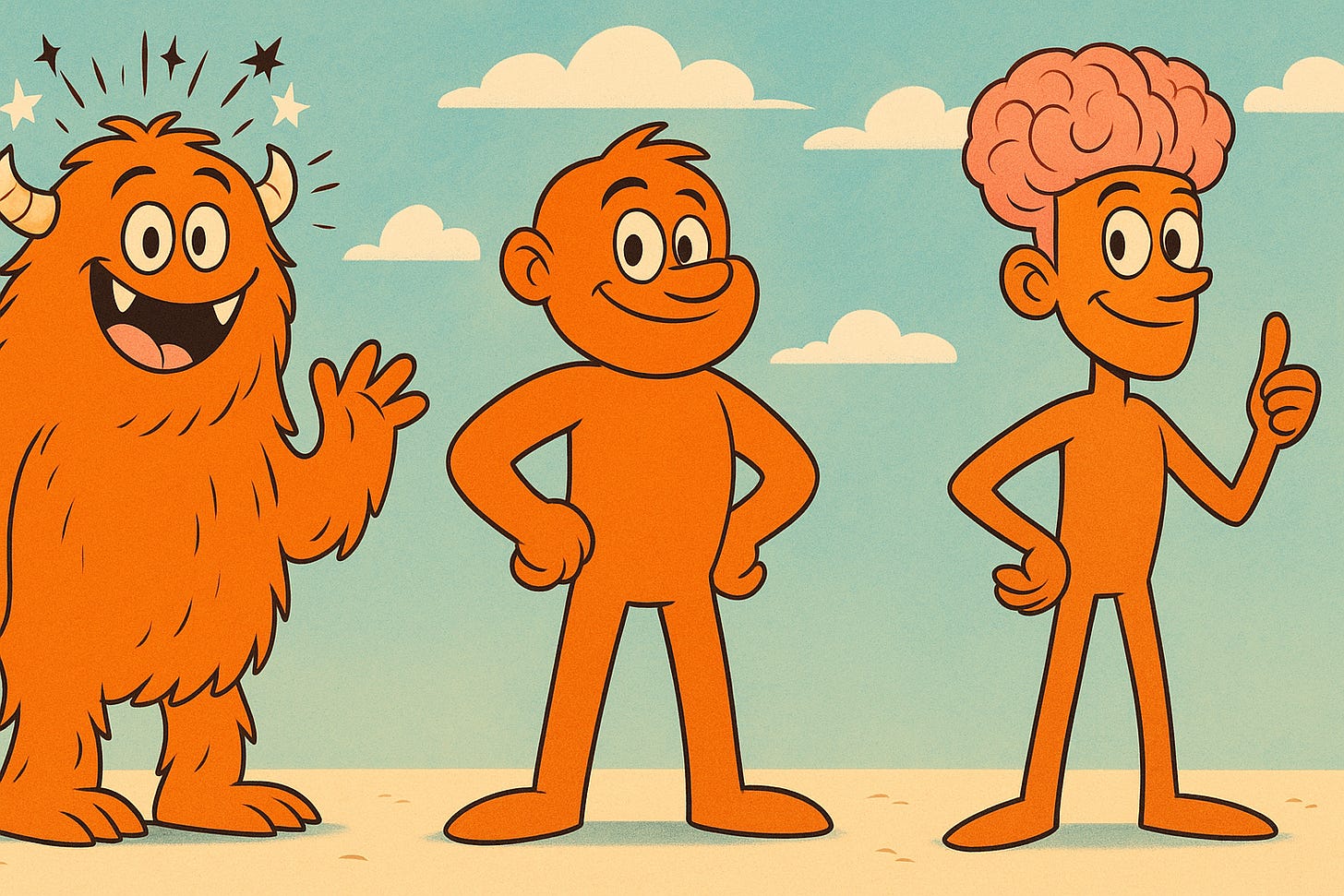
If today’s AI is not magic, why does it seem to keep getting magically better each year? The answer is simple: we’re throwing more math and data at the problem – and coming up with new tricks – which leads to better results. Here are the main reasons AI is improving and will continue to improve in the near future:
More (and Better) Data: Every day, humans generate more data (articles, images, videos, you name it). AI learns from examples, so the more examples it can access, the more it can potentially learn. Future AI models will train on ever larger and more diverse datasets – including realtime data. Moreover, it’s not just quantity; quality matters too. There’s a push to curate better training data (less garbage or bias in, so outputs are better). More multilingual data, more domain-specific data (like medical texts for a medical AI), and even synthetic data (data generated by simulations or other AIs) are being used. All of this helps cover the gaps so the AI has fewer blind spots and less misinformation. Essentially, the “ingredients” going into the AI stew are improving, so we expect the meal to taste better!
More Computing Power: The math that powers AI is computationally hungry. The good news is that computer chips and hardware are getting faster and more specialised for AI. Companies are building AI supercomputers with thousands of GPUs (graphics processing units) or specialised AI accelerators. More compute power means we can train larger models – ones with even more parameters (think of parameters as the “memory capacity” of the model). In the last few years, model sizes jumped from millions of parameters to billions, and now even trillions in cutting-edge research. With future hardware, training a model with 10x or 100x the capacity of GPT-4 is conceivable. Larger models, if managed properly, can capture more complex patterns (though they have diminishing returns at some point). Also, better hardware means models can get faster, so your AI assistant can respond almost instantly and run more complex calculations behind the scenes without you noticing a delay. This raw power is a big reason each generation of AI can do more – we simply couldn’t run something like GPT-4 on the computers from a decade ago.
Better Algorithms and Models: This is the secret sauce that makes everything click. The research community is constantly inventing new algorithms or refining existing ones. For instance, the big breakthrough that led to today’s AI boom was the Transformer architecture (in 2017) – a new model design that made training large language models like GPT feasible and effective. We will likely see new architectures or improvements (some folks are researching models that mimic how our brain works, or that can remember things longer, etc.). Even without brand-new architectures, there are enhancements like better training techniques, clever fine-tuning methods, and “alignment” strategies to make AI outputs more useful and less toxic. For example, ChatGPT was improved via reinforcement learning from human feedback (RLHF) – basically, humans gave feedback on its answers and the model was tuned to prefer the better ones. This drastically improved how helpful and polite it is. Going forward, researchers are exploring ways to reduce hallucinations (like having the AI double-check its work against a database or use logic tools) and to imbue some reasoning skills (like breaking a problem into steps). The bottom line: smart people are constantly tweaking the math to make AI smarter. There’s a whole global community of AI researchers and engineers competing and collaborating to push the state of the art. That’s not stopping anytime soon.
Integration and Specialisation: We’ll also see AI being integrated with other systems. For example, an AI might call an external knowledge source (like a live Wikipedia or a scientific database) to fact-check itself, reducing wrong answers. We’re already seeing plugins and tool integrations with models like ChatGPT. On the other end, some AI models will specialise – you might have an AI that’s just for medical advice, trained on medical data and vetted by doctors, making it more reliable in that domain than a general model. This kind of specialisation can dramatically improve performance in specific tasks (at the cost of breadth). As AI gets woven into more applications, the user experience will also get better; you might not even realise some smart assistant features are AI-powered because they’ll feel seamless.
So, expect AI to become more accurate, more reliable, and more versatile. Does that mean all those limitations we talked about will disappear? Not overnight. But gradually, yes, many will be mitigated. We already saw GPT-4 made strides in reducing the nonsense it spouts . Future models might still hallucinate, but maybe it’ll be a rarity rather than an occasional quirk. Biases can be reduced with careful training and oversight (though that also requires social and ethical work, not just technical). Lack of understanding – that one’s tougher, but with better reasoning techniques and maybe hybrid systems (AI + logic rules + external tools), they might fake understanding well enough that it stops being a big issue for practical use.
Crucially, remember that AI getting “better” means it’s getting better at the tasks we design it for. It doesn’t mean it’s growing a mind of its own. When you hear about the latest breakthrough, it’s easy to imagine AI is approaching human-like thinking. In reality, it’s approaching a very advanced emulation of certain aspects of human output. Whether AI ever achieves true understanding or consciousness is a philosophical debate – but nothing we have today suggests it’s close to that. What is happening is that with more data, compute, and clever ideas, AI tools are becoming more powerful assistants. They’ll continue to surprise us with what they can do, but we should keep our heads: it’s our algorithms and our training that enable these improvements.
Cutting Through the Hype
At Zero Fluff, our mission (and Andy’s personal mission) is to cut through the hype and tell it like it is. And the truth is: AI is awesome, but it’s not mystical. It’s the product of human ingenuity – mathematicians, computer scientists, and engineers figuring out how to make machines appear smart by feeding them tons of data and letting them find patterns. When you see a headline about an AI that “learned to do X” or a chatbot that sounds almost human, you now know the secret: it’s fancy pattern-matching math under the hood, not a digital brain gaining sentience.
Why does this perspective matter? Because understanding that AI is a tool (a very complex tool) helps us use it wisely and not fear it or worship it. We can be impressed without being fooled. Yes, be amazed that ChatGPT can draft a decent email or that an image AI can paint in Picasso’s style – these are genuine technical marvels. But also remember that these AIs lack true understanding, can make mistakes, and can reflect our own flaws. They’re powerful, but we are in charge of how they’re built and used.
The excitement around AI is justified – it’s improving at a rapid pace and unlocking possibilities (from medical research to education to business automation). Embracing the “it’s math, not magic” mindset means we give credit where it’s due (to the science and effort behind AI) and we stay realistic about what AI can and cannot do.
To wrap it up, next time someone claims AI is a mysterious black box or talks about it like it’s a magical entity, you can smile and explain: “Actually, AI is just a whole lot of statistics and math crunching away in the background.” That’s the real story. And if they’re curious, you know where to point them for a no-nonsense explanation 😉.
AI isn’t magic – but it is remarkable. By understanding it clearly, without the fluff, we can appreciate its advances, mitigate its flaws, and use it to genuinely help people. That’s what we’re all about here at Zero Fluff: keeping it real, keeping it clear, and cutting through the noise.
Thanks for reading! Stay tuned for more straight-talk on tech and AI, and remember: the only magic in AI is the magic of mathematics.
What's Your Reaction?
 Like
0
Like
0
 Dislike
0
Dislike
0
 Love
0
Love
0
 Funny
0
Funny
0
 Angry
0
Angry
0
 Sad
0
Sad
0
 Wow
0
Wow
0















